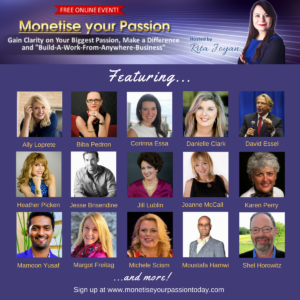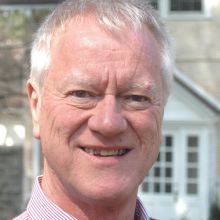How Thailand Looks at Environmental Issues
By Shel Horowitz
During a trip to Thailand, I kept my radar up to see how this small but sophisticated country deals with a number of environmental issues.
Disclaimer: This is not intended to be an in-depth look. It’s based on just two weeks in the country, much of it with an escorted tour—so I’m not pretending to be an authority. But still, I’m trained as a journalist, and with a combination of observations and interviews, I was able to get a pretty good sense of both the good and the bad. Here they are, in no particular order.
Forest Conservation and Biodiversity
The Thai government was a pioneer in forest conservation, outlawing the harvest of most teak all the way back in 1938, when the US and Europe hadn’t given the matter much thought at all. And even though much of the land has been cleared either for rice paddies and other agriculture or for construction, I didn’t see a single commercial lumber truck. I did see one pickup filled with thin branches (no trunks), but that might well have belonged to a tree pruner.
The older teak houses and temples show some signs of deterioration, and there are apparently some ways around the harvest prohibition. We met with the owners of a teak mansion built in 1999, now housing a cooking school as well as several family members. They told us that the house used new wood, legally obtained; they had purchased licenses for each individual teak tree in the project.
Quite a bit of rainforest habitat remains, with its wonderful biodiversity of palms, bananas, fruit trees (especially mangos), strangler figs, and epiphytes, and birds happily enjoy this ecosystem. Much of this is part of the various national parks, one of which we visited (and had a great hike).
Most farms are small. Some are quite diverse, with many types of fruits, vegetables, and staples like tapioca and sugar cane. However, monocropping of rice (and sometimes other crops) across multiple neighboring fields is common. In rural areas, it’s more common to see homes built of natural materials such as bamboo and thatch.

Smog and Noise
Thailand gets a C+ here, and Bangkok gets an F. Many areas are choked with traffic and with fumes spewing untreated from two-stroke motorbikes and tuk-tuks. Four-stroke gasoline-powered cars and diesel truck and bus engines run cleaner, but not clean enough. Many “long tail” tourist boats are powered by old V8 automotive engines with neither smog control nor muffler. Thailand’s cities have very poor air quality, and they are LOUD. Hybrid vehicles are relatively rare, though they do exist. While not nearly as common as Beijing or Shanghai, many people wear surgical masks when they’re out and about (and in Bangkok, we wished we had them—though everyplace else we went, even the metropolis of Chiang Mai, smog was not a noticeable problem).
In Bangkok, smoking is common, which doesn’t help the air quality; smoking was much less popular in the north. We didn’t pass many factories, but those we did encounter seemed relatively clean. I can’t remember seeing any belching smokestacks.
Still, there’s a lot more work to be done. Pollution control on the two-stroke engines would be an excellent place to start.
Organic Agriculture, Crafts, and Natural Foods
To our surprise and delight, there seems to be a substantial movement toward organic agriculture, some of it driven by the late King Rama IX. Several of the rural hotels we stayed at grew many of their own vegetables, all of them organic. In the cities, it’s easy to find organic food in the larger supermarkets. In the north, we ate at several organic restaurants out in the country, some part of resorts and others all by themselves. Thailand has a rich and diverse cuisine that we’ve been enjoying since the 1970s, and Thais put enormous value on freshness. This trip was the first time I’ve ever experienced bamboo shoots or baby corn fresh. In the US, they’re usually canned (and awful), though I’ve occasionally found dried or pickled bamboo shoots.
Most restaurants were willing to accommodate vegetarians and many offered vegan options. When our tour stopped to eat as a group, our tour leader would always make arrangements and the restaurant would prepare close equivalents to the food everyone else was eating—even special soups with vegan bases. Much of Thai cuisine, including several wonderful curries, is based on rice and noodles (made from wheat, rice, or beans) with fish sauce, meat or fish, and vegetables added, so it was easy enough for restaurants to pull some aside before adding the parts we didn’t want.
When we were on our own, though, we avoided the curries unless we were in vegetarian restaurants, since pretty much any prepackaged curry paste is going to contain fish sauce. But we were able to find choices both at sit-down restaurants and in the stalls lining the alleys of the local markets, where we easily found healthy snacks like buns filled with taro, pumpkin, or sweet potato…coconut pancakes…terrific fresh fruits and smoothies…tofu dishes…and quite a bit more.
Local crafters are everywhere, though it takes an experienced eye to steer visitors to the right places. Our tour leader was very good at this, and took us to many crafters, including an organic coconut farm, a 76-year-old woman who showed us how to dye fabric naturally with indigo (she sells to Japan Air Lines’ duty-free stores), and various other cottage industries. Our leader also let us sample many of the local snacks, including a stop at a shop that sold about two dozen varieties of banana, taro, and sweet potato chips.
As a visitor, I feel some obligation to support these types of places as much as possible, and not buy much from the big malls that are beginning to crowd out the independents. And as a shopper, I found the prices low and the quality high. So everybody wins.
Water Conservation
Although water is ample (sometimes too ample, as flooding is a problem in many areas), Thais seem to have high awareness of just how precious water is. Many toilets are dual flush, taps are designed to be workable with low flow, and water-saving showerheads were very much in evidence. One four-star hotel not only displayed the usual sign about washing sheets and towels but another one explaining that water is precious and suggesting turning the water off while shaving and brushing teeth—yay!
Energy
Thailand has 22 operating hydroelectric plants with capacities ranging from 0.13 to 749 megawatts —four of them 500 MW or above (and several more in the planning stages). I saw almost no solar or wind. The solar I saw was all very decentralized, powering one building or part of one. I may have seen one wind farm but it could have been something else. Interestingly, one area that did use more solar was the village in far-northern Thailand where members of several different hill tribes live together and sell beautiful crafts to travelers. This is one of the late king’s numerous social betterment projects, and features running water and other amenities, while allowing the tribespeople to live a more traditional life than they could in a city.
I understand that commercial solar panels are expensive. But given Thailand’s subtropical to tropical climate, solar would be a natural, and some technologies (including solar water heating) can be done quite cheaply. Insulating more of those cheap houses and stores might be another good step. It wouldn’t make much of a difference in the energy picture because most of those homes, at least, aren’t air conditioned. But it would make a lot of difference in people’s comfort.
Despite the paucity of hybrid cars (I think I saw three Priuses and one Honda Insight), the vehicle fleet is dominated by small, high-MPG cars. As in much of Europe and Latin America, most of the trucks are also much smaller than the US fleet. However, there’s clearly an influx of new money, and one of the ways it shows is the rapidly increasing number of luxury and sports cars. I noticed several BMWs, a couple of Porsches, one Ferrari, and lots of Lexuses, as well as quite a number of Japanese-made SUVs and minivans. But the vast majority were small or mid-size Japanese and Korean sedans.
Bangkok has two separate rapid transit systems plus several kinds of city buses. Everywhere else, we saw no buses at all, just collective taxis: either converted pickup trucks with a bench along each side and one up the middle (called song thaew), or tuk-tuk minivans, called etans. We saw bus stops in Chiang Mai, but never saw a bus. Of course, there were thousands of regular tuk-tuks (which hold three passengers if you squeeze) and hundreds of metered taxis.
Trash and Recycling
Separation stations for glass and plastic bottles show up occasionally, but aren’t widespread. We saw no paper recycling at all—but we did see employees hand-sorting trash and removing and crushing plastic bottles, several times. Many of the farmers and gardeners compost, and we even visited an elephant refuge that collected the poop not only on land, but even while the animals were bathing in the river—crew members were stationed a hundred yards downstream, with nets and pails. They sold some of it as fertilizer and used some to manufacture paper. The fiber content is high enough, and the paper doesn’t smell. I actually know someone in the US who sells a line of specialty gift papers made largely of elephant poop, and they’re lovely.
Litter exists and in some areas is considerable, but much less than in many other countries we’ve traveled through.
Urban Oases
Every city we visited had plenty of parks, some of them stunningly beautiful. But even more than the parks, many of the thousands of Buddhist temples are urban oases, places where you can relax, distress, and meditate in front of the Buddha. Sometimes the plazas inside the gates are lively and noisy, but always, the temple interiors provide respite. And often the courtyards and gardens do as well.
Other Urban Planning
If Thailand has zoning, it doesn’t seem to be much enforced. Towns and cities grow in a tangled sprawl, using cheap construction materials and without regard for infrastructure. This leads to massively overcrowded roads and a sense of loss as the very beautiful indigenous architecture gives way to “anywhere” buildings.
As an example, during World War II, the area around Kanchanaburi—where the bridge over the River Kwai was built—was jungle wilderness. Now the main road is strip mall central, all the way from Bangkok.







